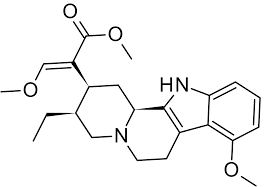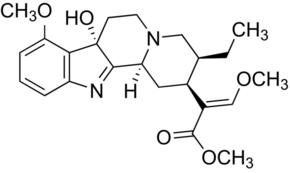Rat Study, Are Kratom Alkaloids Addictive?
This is a summary of the Hemby et al. article “Abuse Liability and Therapeutic Potential of the Mitragyna Speciosa (kratom) Alkaloids Mitragynine and 7-hydroxymitragyne.” I have tried to keep this simple, so lay people can understand the research, while not misrepresenting the science.
Go here to access the original article
Basic Kratom Biochemistry
The herb Mitragyna speciosa (Kratom is its common name) has numerous constituents which give its medicinal properties. The two which are commonly cited are mitragynine (MG) and 7-hydroxymitrgnine (7-HMG).
These are just two of 25 different alkaloids found in kratom. An alkaloid is simply a naturally occurring chemical that has a nitrogen base. There are many different types of alkaloids found in plants. They can be very different from each other. Just because one alkaloid has certain effects on the body, that does not say anything about what another alkaloids may do.
Alkaloids in kratom:
- Mitragyne (MG) is about 60% of total alkaloids.
- 7-hydroxymitrgnine (7-HMG) is about 2% of total alkaloids.
- Over 25 different alkoids make up about 38% of total alkaloids. There is a lack of research on these other constituents.


MG and 7-HMG are believed to effect opioid receptors. This has led to concern about the potential for abuse and addition. This study used rates to examine the potential of MG and 7-HMG for abuse and addiction.
Kratom has traditionally been consumed as tea or powdered leaves. In this study rats where not fed kratom in any such form. Rather, the two alkoids were given to rats in isolate, via IV. The main alkaloid MG was isolated from kratom. 7-HMG was synthesized in the lab.
This study conducted 3 experiments on rats.
Experiment 1
Rats where given IV morphine in repeated sessions until they showed signs of addiction. This was followed by sessions of either MG or 7-HMG. After the rats behavior stabilized to this, they were once again given morphine.
Interesting, the rats given MG had, “significantly reduced morphine self-administration.” In other words, MG made morphine addicted rats use less morphine.
7-HMG had the opposite effect. It “significantly increased self-administration of …morphine.”
Experiment 2
Rats where given doses of either MG, 7-HMG or morphine. Following this, they were allowed to continue to give themselves smaller doses of the same chemical assigned.
This found that MG did not lead to rats to using more MG. However, 7-HMG did lead rats to seek out more 7-HMG.
Experiment 3
There are 4 different types of opioid receptors:
- Delta
- Kappa
- Mu
- Nor
This experiment was designed to study the effect of morphine and 7-MHG on either mu or delta opioid receptors. Rats where given different drugs that block specific opioid receptors.
- NLXZ blocks mu opioid receptors
- NTI blocks delta opioid receptors
Rats who were self administering either morphine or 7-HMG were given either NLXZ or NTI, then allowed to self administer morphine or 7-HMG again. By blocking receptors, NLXZ or NTI would make rats less likely to use a drug that works on those receptors.
Experiment results
- NLXZ led rats to use less morphine. Therefore, morphine must work on mu opioid receptors.
NTI did not change rates behavior. Therefore, morphine does not work on delta opioid receptors. - Both NLXZ and NTI reduced the rats intake of 7-HMG. Therefore, 7-HMG effects both of these receptors.
Summary of the study’s conclusion
Like many research studies, the authors suggest caution with interpreting results and the need for more research.
Kratom has been used anecdotally by people to get off of opiates. The results on MG do seem to verify this use:
“In summary, the present finding from the rodent self-administration model indicate that MG, the main kratom alkaloid, does not have abuse or addiction potential and reduces morphine intake – desired characteristics of candidate pharmacotherapies for opiate addiction and withdrawal.”
This very positive quote is immediately followed by warming:
“In contrast, 7-HMG should be considered a kratom constituent with high abuse potential that may also incrase the intake of other opiates. Although 7-HMG constitutes only 2 percent of the alkaloid content of kratom, purified extracts of 7-HMG are widely available on the internet and care consumed for their euphoric effects.”
Commentary
Nature does not give us isolated “active ingredients.” Herbs have multiple constituents, often with seemingly opposing actions. Your body doesn’t know what the supposed “active constituent” or intended effect is. The effect you get, is that of the whole herb and all it’s parts working together.
Consider Camellia sinensis. This is the plant that gives us black and green tea. Its exciting fraction is caffeine. It’s calming fraction is L-theanine. Both caffeine and theanine can be extracted and given to people in isolation. Theanine is a a common supplement used for stress and anxiety.
However, the action of the whole plant is not just caffeine or theanine. It is those two constituents, plus everything else mixed together.
Another well known example of an herb with two opposing fractions is marijuana. This is a quick generalization but, the THC fration is stimulating, while the CBD fraction is calming. CBD oil extracted from hemp has just the CBD with none (or close to none) THC.
The same herb, may have different properties based it is grown and processing. From a bio-chemical perspective these factors can effect the balance of different constituents. This is important with an herb such as kratom. Its medicinal properties can change depending on where the strain comes from and how it was processed.
When people use kratom as a medicinal herb it is typically consumed as a tea or powder. Historically, workers in Southeast Asia would chew the leaves. When kratom is consumed as a whole herb, people are getting the combined effect of all the herbs in the plant. This may be different then the effects of isolating just one lone constituent. Also, taking in herbs orally limits the dose to what someone may swallow and absorb from the digestive tract.
Researchers often try to reduce herbs down to their one “active ingredient.” This sort of research does help us understand the physiological effect of herbs. But this can also lead to conclusions that are taken out of context.
It is clear from this study that 7-HMG has abuse potential. Thankfully, nature saw fit to small amounts of this potentially harmful substance together with another compound (mitragynine) which seems to counteract the harmful effects. Remember, kratom has about 30 times more mitragynine than 7-HMG.
If you wish to have proof that the whole herb kratom can be used to help people get off of opiates, the results regarding MG are very promising. However, this study can not be used to prove that, as it had numerous limitations which the authors point out. Regardless, the results on MG do seem to back up the clinical response many people have.
What I am more concerned about are people who take very limited data and use it to fear monger. From the study 7-HMG stimulates the mu opioid receptor. So does morphine. That does not make 7-HMG the same as morphine. Nor does it mean that the clinical effect of injecting purified 7-HMG directly into rats, will do the same thing to people consuming kratom as a powder or tea.
I have seen many people equate kratom with opioid drugs based on the fact that both stimulate the mu-opioid receptor. That is taking research out of context to draw a preconceived notion that kratom must be dangerous.
The study clearly states that the main alkaloid, MG does not have abuse potential.
The authors did give two warnings about kratom at the end:
- People should not consume purified extract of 7-HMG.
- Concerns about adulterated kratom products that may have high concentrations of 7-HMG.
I agree that people should not consume extracts of 7-HMG. That is not how kratom has been used traditionally. And it is important that sellers take steps to ensure they are providing customers with a good, non-adulterated product.
None of these two issues should scare people away from appropriate use of the whole kratom herb.